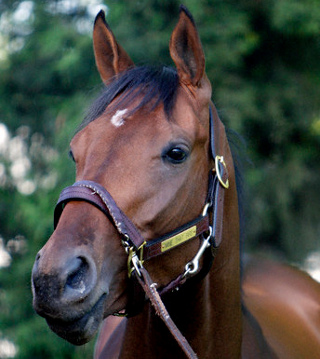By Michael Dorausch, D.C.
The third leg of the 2009 Triple Crown is upon us, with the Belmont Stakes taking place on Saturday, in Elmont New York. When reporting on the May 16 Preakness Stakes I mentioned how growing up as a kid, my parents used to take us to Belmont Park, for weekend horse races. The 2009 Kentucky Derby was only the second sporting event I watched on TV so far this year (I also watched Super Bowl 43), followed by watching the 2009 Pimlico Preakness Stakes. I don’t watch a lot of television (that may seem kind of obvious). I do love sports though and I’ll be checking out the Belmont Stakes via ABC HD television.
I had the chance to get in touch with Sacramento chiropractor, Dr. Jeri Anderson, who’s an expert on competitive horseracing. While everybody’s been talking about Mine That Bird and his amazing upset at the 2009 Kentucky Derby, I’ve been wondering how champion jockeys like Calvin Borel manage being on a horse, traveling at such a fast speed. I figured it’s got to be incredibly tough on the body.
 I asked Dr. Anderson (besides being a chiropractor, she has a long history in competitive horse riding) what it’s like being on a horse in a situation like the Kentucky Derby or Belmont Stakes.
I asked Dr. Anderson (besides being a chiropractor, she has a long history in competitive horse riding) what it’s like being on a horse in a situation like the Kentucky Derby or Belmont Stakes.
Here’s what she had to say…
The power of a horse accelerating out of the gate is explosive! However, the jockey is already concentrating on placement of their horse in the pack. Like a human runner, every horse has its own unique pace in a race. Some are better leading the whole way, and some have a finishing burst at the end. Besides monitoring the pace, the jockey has to always look for a path through the pack so that their mount does not get boxed in on the rail, or expends too much energy running on the outside of the pack (which causes a longer trajectory to the finish).
Jockeys do not have much of their leg wrapping around the barrel of the horse in comparison to traditional riding styles like western or even hunter/jumper. Therefore, jockeys must have incredible balance (proprioceptive sense) and leg and core strength. Jockeys have one of the most dangerous jobs on earth, with many suffering spinal fractures, spinal cord injuries and/or head injuries during their careers (often ending their careers), even at the most elite levels of talent and experience.
One of the ways that a jockey communicates effectively with their horse is through their hands. They must possess a good feel in their hands to communicate with the horse without impeding the horse’s forward motion. Great jockeys become one with the horse. Looking at them in the distance, it just looks like one being moving, not a separate horse and rider. Great jockeys are fluid and move with the horse without impeding the horse’s effort. They can conserve the horses energy without fighting with it and unleash that energy at the perfect moment. Riding at that level is very exhilarating!
By the way, great horses are competitive and know and love their jobs. They have their unique personalities and quirks. Trainers and exercise riders communicate the horses unique traits and needs to the jockeys!
On the topic of New York’s Belmont Stakes, Dr. Jeri reminded me that most jockeys and riders functioning at elite levels in equestrian sports are receiving chiropractic care. She emphasized that their careers depend on it. She also reminded me that many of the race horses are adjusted as well (watch a chiropractic for horses video here).
For those of you watching on Saturday, the Belmont Stakes Post Time is set for around 6:27 PM Eastern time. It is a million-dollar horse race, featuring three-year-olds on a 1 1/2 mile dirt track. Belmont Stakes TV Coverage is provided by ESPN from noon until 5 PM (Eastern time) and the Belmont Stakes will be broadcast on ABC ( with live coverage from 5 PM to 7 PM).
This link to some 2009 Preakness coverage includes a video replay of the 2009 Kentucky Derby, where 50 to 1 long shot Mine That Bird, pulled off a monumental upset. The above photo (featuring horse Mine That Bird) initially appeared in this Pimlico Preakness Stakes article. Filly Rachel Alexandra won that race.




Comments are closed for this article!